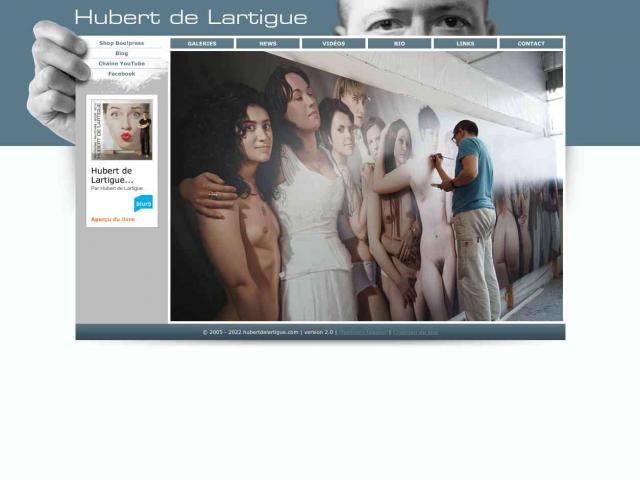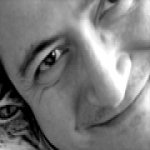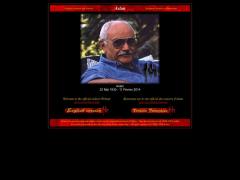Hubert De Lartigue
Hubert De Lartigue
Information
De Recherche Et De Creation
Thanks to science fiction. One day during college, I chose to make a speech on the subject, and in my research, I fell on the draft amendment from "Dune" by Jodorowsky. This engaged a number of artists including the specialist in spaceships at the moment, Chris Foss.
I was subjugated by the realism of his drawings and without thinking only one second of becoming illustrator, I started to copy his works frantically. Then from wire out of needle, the trade was born. By creating my own vessels, I started to control the technique of the drawing, page-setting and the prospect?
Did your parents encourage you in this way?
There was no reserve of their share. Like all the parents, they were just anxious knowledge what I was going to do later. As from the moment when they understood that it was my way, they never slowed down me, on the contrary. At that time, publicity was in full rise. That rather tended to reassure them?
Then you return to the Duperré school?
Not completely. As I had missed my vat and that this school required it, I left to make my military service in 1982 and I passed by again this examination as a free candidate. Then, I made a success of the entrance examination. In four years, I obtained the BTS visual expression, then the higher diploma of the applied arts to the Estienne school.
Which memories do you appoint these years?
That enabled me to meet friends whom I always attend and of the professors who brought to me much. In particular George Pichard, then professor of graphic arts in Duperré. It was a good man and everyone appreciated it and respected it. What had fascinated me at the time, it was the variation which there was between this distinguished man and his frankly erotic work. After my studies I continued to visit him to show him the evolution of my work. I was always impressed by the accuracy of his judgements and especially by the tact with which it lavished its councils.
Which style did you have?
I continued in the way of realism. It was the golden age of this style with personalities like Pierre Barraya, Pierre Peyrolle, Jean-Paul Goude, Jean Lagarrigue. My technical level enabled me to start to work during my studies for the edition. I carried out covers for Denoël and I have Lu.
In the margin of this production, I believe it said that you worked much for publicity?
At the exit of the school, I specialized in the packaging. I drew hundreds of small cakes, ices, fruit and vegetables, etc It should be known that at that time all took shape. The photograph was not yet omnipresent.
They was to some extent your ranges?
Absolutely. One could not be satisfied with an approximation because it is the customer who decided with the final one. It was known that if work were not well made, the drawing was going to be turned over to us. Then, there was necessary to be good of continuation, while remaining effective. The crisis, and the simultaneous arrival of the numerical illustration and the free image data bases of rights marked the end of this golden age.
You then turned to the pinups?
Gradually, I put more and more characters in my drawings. The pinups, I did them for me. I was always amateur, but as a draughtsman, I spent years before managing to produce something of correct. At the beginning, it was only one subject like another. It is at the time of the operational startup of a calendar that I was caught, little by little, with the play. The subject was naked girls with black shoes and the title was quite naturally Black Shoes. But no editor took the risk to publish it.
Which were your Masters at this time?
Aslan, George Petty and especially Alberto Vargas. I was useful myself of photographs found in magazines like documents. But I realized that to being inspired some too much one does not progress any more. I spent sometimes more time to seek photo documents than to paint. I diverted them, putting end to end, the installation of a model with the hands or the face of another, and the behaviours of a third. Then I decided to make pose my own models.
What did you withdraw some?
I progressed in a spectacular way. Lastly, I had a perfect control of the image: I chose the models, the installations, lighting, etc I became the creator of the image to hundred percent.
Summers you a photographer who paints or a painter who photographs?
I quite simply use the means which I judge useful to reach my goal: an ideal of beauty and perfection. What interests me, it is to be the Master of each square centimetre of my works, since the creation of the concept until its execution. The model is the only person who interferes with my art. It is a kind of collaboration between somebody which looks at and somebody which is shown.
Precisely, that do you answer those which consider that this search of perfection dehumanizes the woman and that, in fact, your models miss sensuality and of seduction to become only kinds of icons. Even if I do not agree I do not have anything to answer them. The image must only be defended. I do not have anything to explain nor to justify. I must say that what imports me more, they are testimonys of recognition of my models. Then if my paintings leave cold a certain public, that imports me!
Was your technique always the aerographer?
I always was at ease with this technique. The aerographer was invented there is more than one hundred years and its principle goes up with prehistory. The man who projected pigments with the mouth on his hand applied against the wall of a cave invented the principle of the projected color. The aerographer was used much by the photographers to improve and coloriser their pullings. Later, of the lithographers and the poster artists as Cassandre also adopted to make the ranges of the posters Art déco. The popularity of this tool always devalued within the framework by contemporary painting. This a priori stupid will disappear only with time and thanks to the artists who use it. For more than twenty years the urban artistic movements have adopted it. I think that with the advent of the digital graphic techniques, the aerographer finally will reach the "traditional" statute of tool.
With which materials do work you?
I use painting and the inks acrylic, applied to the brush in hair of marten and projected with the aerographer. These inks, like the watercolour, allow all the transparencies and all subtleties. Pigmented, they resist the light. The acrylic resin is more stable than oil and will never be cracked. To be sure perenniality of work, I work on nonacid papers.
How did your first sitting occur?
I remember that I was very moved. Many of my photographs were fuzzy! I began again myself and I took taste there. I believe that my models like to pose for me. I receive many requests of young women who would like to pose and to see itself in painting. Sometimes I think that I make a beautiful trade. Other times, that there is a price to pay. But I accept it.
How is a sitting organized?
I prepare my meeting by carrying out small sketches in a notebook which never leaves me. There, I work out the installations and page-settings of my future images. The meeting lasts approximately an hour. The photographs are used to me as documents to carry out final work. Finally there is little or not improvisation.
I imagine that there are installations which return or which are essential naturally?
That belonged to the tradition. There are installations known as "traditional" like the pinup lengthened, on a chair, or on the telephone. With each one to draw according to its sensitivity and its manner. It is like the landscape or the still life, a exercise of style.
What do you think of bringing moreover in this tradition of the pinup?
While registering me in the tradition of this kind, I perhaps grant a larger respect to the models. I hold much so that the image which I carry out resemble the model that I paint. I want that the result is the exact representation of these women at a given moment. My elder used more the model as material of work. Of agreement, they help me to carry out a beautiful table but at the same time, I represent them as they are. They become the subject and do not make only serve it. I seek with them to reveal their treasures of seduction.
Do you smell sometimes, a spark at the time of the installation?
Certain models inspire to me more than others without I being able really to explain it. The woman is a mystery. I try to include/understand it and retranscribe my emotion while combing them. Often, the model causes in me a desire which grows blurred and disappears completely when the table is finished. I do not know if it is due to the fact of taking again on my account their seduction first or to reproduce it but the model then loses its capacity of seduction. Until the day when I met a young woman of which I did not succeed in exhausting the capacity.
Why to have changed support and of format?
That comes quite simply from a need to express my art with more force, I want to leave a trace of my passage ici-bas. The pinups constitute for me a form of art to whole share. It is of nothing the illustration since, by definition, there is no text. As long as it is not oil on fabric, people tend to consider that it is not art. One too often associates the technique and the support the illustration. It is an error from my point of view. As from the moment when I chose the subject, the format, and where I do not have any commercial constraint, one is far from the field of the illustration.
One finds today in your production of the formats 130 cm X 89 cm on fabric. How did the idea come to you from the large sizes, then close-ups?
I think of being subjected to the influence of my MUSE. There no was strategy. That was essential naturally.
You are not afraid to fall into a certain madness?
It is the case for a long time. In any event, it is not normal to be locked up hours even days to apply matter coloured to a support. Of one moment, I think that technically I will be vis-a-vis a wall. Such a dexterity is needed, such a concentration that I suppose that with time they will be reduced. As that of a musician virtuoso who ages, my hand will lose its safety. I apprehend this moment even if I try today not to think of it too much. The hyperrealism is for me a means of causing an emotion. I seek the visual shock and the aesthetic emotion above all.
It is limiting neurotic?
It is rather a kind of search impossible because the perfection is never reached. Although one can think of reaching it with the realism of a photograph. It is always an interpretation.
I believe it that you hate to make the same thing twice?
Insofar as I am in research, I do not like to return to the same place. The woman is an inexhaustible subject. As long as I respect the resemblance of the model, each table is different. It is necessary for all to paint for oneself, to continue to surprise itself, to progress, without thinking of what will like. At my beginnings, I far did too many drawings alike. Today, which likes me follows me!
What do you think owing to the fact that one can envy you?
Such an amount of if that done fantasmer better. Many will be perhaps disappointed knowing that I have a wise life of family and line. But it is like that.




